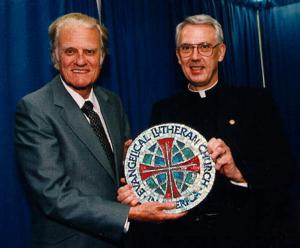
Conservative movement of American Protestantism.
The many Protestant churches that had been established in the USA during the 18th century reacted to the development of the 19th century in different ways. While the mainstream churches could adapt to changing circumstances, other groups turned to fundamentalism and sought reassurance in face of a changing world by returning to teachings of the past.
The roots of modern fundamentalism go back to the 1830s, when some small sects began to preach the impending "Second Advent of Christ" followed by a thousand years of peace (the "millennium"). By 1870 the movement had taken on an organized form in the Niagara Bible Conference. For the next 20 years the millenarians held annual conferences that attracted participants also from the mainstream churches.
Fundamentalism teaches the literary correctness and inerrancy of the Bible, the imminent and physical Second Coming of Christ, the Virgin Birth, Resurrection and Atonement. Towards the end of the 19th century organized fundamentalism found support from the Princeton Theological Seminary. Although its professors did not openly support fundamentalism they tried to defend the authority of the Bible against new findings of science and participated in fundamentalist conferences.
The result of the collaboration was a series of twelve pamphlets The Fundamentals issued by the American Bible League that was founded in 1902. Two decades of controversies between factions of fundamentalists ended in 1919 with the founding of the World's Christian Fundamentals Association. The movement grew more aggressive, reaffirmed its basic teachings and called for the exorcism of the evils of modernism, particularly evolution. It replaced its collaboration with universities by the establishment of Bible Institutes.
During the 1930s and 1940s fundamentalist influence grew strong enough that it lead to splits in the Presbyterian and Baptist churches. Today the various fundamentalist groups are served with literature by Bible Institutes and influence public policy through fundamentalist professional organizations for doctors, scientists, athletes, social workers, businessmen, actors, nurses, students and others.
After World War II fundamentalism promoted the revivalist movement and the fight against the communist menace. William Franklin Graham jr. ("Billy Graham") was regarded as fundamentalism's major voice during the period. His preaching tours known as "crusades" took him across all of the USA and to Europe. From 1946 onward he was a regular guest in the White House with presidents Truman, Eisenhower, Johnson and Nixon.
In the 1970s fundamentalism intensified its campaign against evolution by inventing "creation science" and demanding that it be taught in schools in parallel to evolution.
Encyclopaedia Britannica 15th ed. (1995) Billy Graham.
Sandeen, E. R. (1995) fundamentalism, Encyclopaedia Britannica 15th ed.
From the web site of
David J. Hetland Liturgical & Public Art
(http://www.hetland.com/mosaics/bg-elca.htm, accessed 2 May 2004):

|
This mosaic of the emblem of the Evangelical Lutheran Church in America was presented to The Reverend Billy Graham in gratitude for his forthright witness to the Gospel, his profound ecumenical awareness, his visionary leadership in evangelism endeavors, his conscientious attention to integrity in both moral practice and fiscal operation, and his unremitting service in calling people on every continent to faith in Christ. He stands as a giant in the twentieth century in faithful proclamation that "by grace we are saved through faith, and this is not our own doing; it is the gift of God - not the result of works, so that no one may boast." (Ephesians 2:9-9). |
reproduced by permission